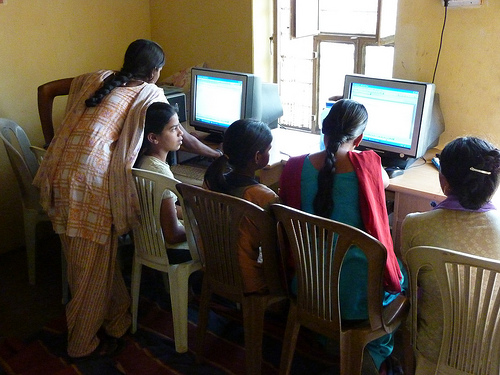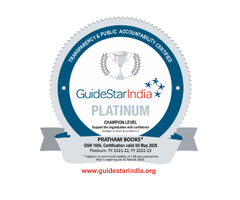Pratham’s Education for Education Program

Rukmini Banerji talks about one of Pratham’s innovative computer literacy programs in rural India, Education for Education.
Via Kravis Prize
It was mid morning. We were in a remote area of rural Katihar district in the state of Bihar in eastern India. The village road wound through the fields and past mango orchards. We stopped outside a small house with bamboo fencing. We walked in through the little gate into the courtyard. A few bicycles were parked under a tree. The house in front had two small rooms and a small verandah. Shoes and slippers were lying neatly at the edge of the room. The floor and the walls were bare – just simple mats on the floor.But in the center of the room we could see two laptops. Four young people sat with the computers – two to one computer – with the computer instructor right next to them. She was young – not more than 20 or 22. Her students were also probably the same age. They were learning how to make PowerPoint presentations. I sat quietly behind this group for a long time. The instructor spoke and the students did what she said. It was the best lesson on making PowerPoint presentations that I had ever witnessed. Apart from a quick welcome, neither the students nor the instructor paid any attention to me. They concentrated on the work they were doing. I later learned that the electricity supply in the village is unreliable, so while there is electricity, they don’t waste time and they maximize what they can do on the laptops.This initiative is called Education for Education, which is working in tandem with Read India, Pratham’s flagship program that strives to have all children in school and learning basic reading and arithmetic skills.Pratham’s Education for Education initiative attempts to introduce a value for value dimension into the large scale Read India work that is already in place. Every village volunteer who works with children in Read India is entitled to a basic computer course. This computer instruction is available to the volunteer within a 10 village radius of where he or she lives. The computer instructor (who is called an Education Entrepreneur) figures out a location that is convenient and accessible for volunteers and arranges a one and half hour class that volunteers attend for three days a week over four months. This year, a spoken English program is going to be layered on to the digital literacy platform.The computer instructor can use the time that he or she is not teaching for his or her own purposes. Many have started small computer based service business outside of their Read India commitments. As part of the program, the computer instructor owns the laptops via deductions from her monthly stipend over the course of two years. So not only are we trying to create a large pool of young people who have computer skills, we’re also creating a core of young entrepreneurs.
Read the entire article here.








